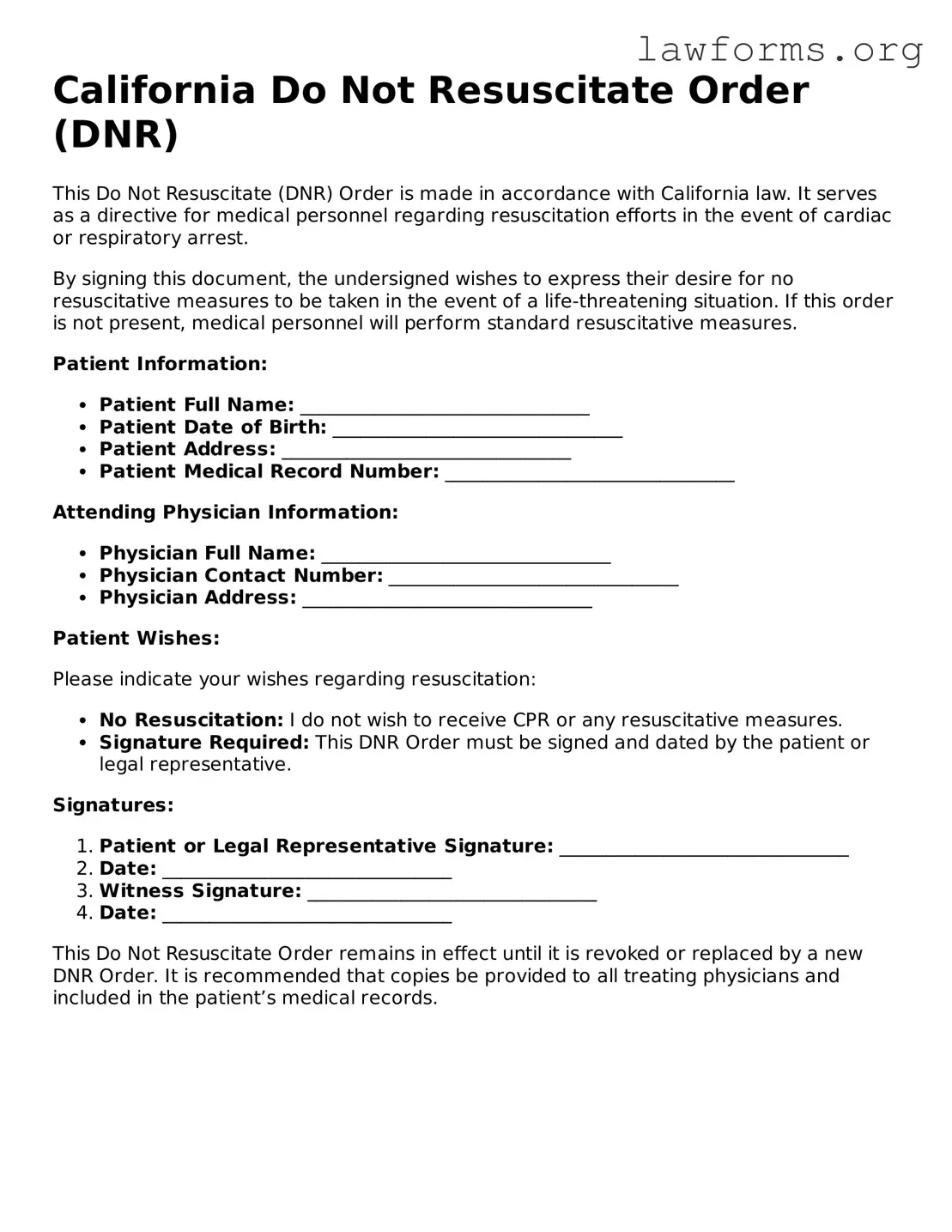California Do Not Resuscitate Order (DNR)
This Do Not Resuscitate (DNR) Order is made in accordance with California law. It serves as a directive for medical personnel regarding resuscitation efforts in the event of cardiac or respiratory arrest.
By signing this document, the undersigned wishes to express their desire for no resuscitative measures to be taken in the event of a life-threatening situation. If this order is not present, medical personnel will perform standard resuscitative measures.
Patient Information:
- Patient Full Name: _______________________________
- Patient Date of Birth: _______________________________
- Patient Address: _______________________________
- Patient Medical Record Number: _______________________________
Attending Physician Information:
- Physician Full Name: _______________________________
- Physician Contact Number: _______________________________
- Physician Address: _______________________________
Patient Wishes:
Please indicate your wishes regarding resuscitation:
- No Resuscitation: I do not wish to receive CPR or any resuscitative measures.
- Signature Required: This DNR Order must be signed and dated by the patient or legal representative.
Signatures:
- Patient or Legal Representative Signature: _______________________________
- Date: _______________________________
- Witness Signature: _______________________________
- Date: _______________________________
This Do Not Resuscitate Order remains in effect until it is revoked or replaced by a new DNR Order. It is recommended that copies be provided to all treating physicians and included in the patient’s medical records.
